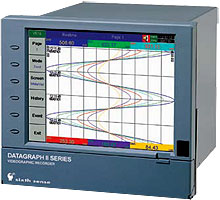

Each one will contain the implementation of only the part of the data graph it is responsible for. Instead of implementing the complete data graph on a single codebase, the responsibilities of different parts of the data graph can be split across multiple composable services. Federated Implementation of GraphQL ServicesĪ monolith GraphQL server that implements a lot of services for different schemas can be challenging to scale. This is eliminated with federated services where we can independently maintain and scale individual services like the products service.

In case of a monolith approach, the scaling would’ve had to take place on the overall server. For example, the products service is used the most on the platform, and the vendors service is scarcely used. This makes it extremely streamlined to allow different teams managing different schemas to collaborate easily.Īnother advantage would be handling the scaling of individual services rather than maintaining a compute-heavy monolith for a huge data graph. Each service is responsible for resolving only the part of the data graph that includes the schema and data source. Let’s consider a federated approach with separate services implementing products, reviews, and vendors. It would be a task for teams to collaborate and come up with their individual implementations. In a usual monolith GraphQL server, this query would involve writing a resolver that’s a mesh of the data sources of these individual schemas. To further demonstrate the example above, let’s say the client asks for the top-five products, their reviews, and the vendor selling them. Also, a federated set of services would still follow the Onegraph principle of GraphQL, which will allow the client to query a single endpoint for fetching any part of the data graph. Each service can be implemented independently by individual teams while maintaining their own release cycles and having their own iterations of their services. Thus, one solution is a federation of services for a single distributed data graph. Another overhead that this would bring is having to scale a huge monolith that’s implementing all these services.
#DATAGRAPH REPAIR CODE#
The different schemas of the e-commerce platform look something like:Ĭonsidering the above example, it would be a chaotic task to maintain the graph implementation logic of all these schemas on a single code base. Now, let’s consider a massive enterprise e-commerce platform as an example. Though there is only one graph, the implementation of that graph should be federated across multiple teams. In addition, we want teams to be able to independently implement, maintain, and ship different schemas of the data graph on their own release cycles. However, it would be challenging to have all of the huge enterprise data graphs’ layer logic residing on a single codebase. With that, it will be easier for a client to query a single graph and get all the data without having to query different graphs for different data portions. Now, if we’re considering implementing a GraphQL layer at the backend, it would only make sense to follow the one graph principle of GraphQL: this says that to maximize the value of GraphQL, we should have a single unified data graph that’s operating at the data layer of this product. This product would essentially have multiple teams responsible for maintaining different modules of the product. To summarize his point, let’s consider a very complex enterprise product.

James Baxley III, the Engineering Manager at Apollo, in his talk here, puts forward the rationale behind choosing an independently managed federated set of services very well. Having said that, it can be challenging to follow this principle for an enterprise-level application on a single, monolith GraphQL server. One of the key principles of GraphQL involves having a single data graph of the implementing services that will allow the client to have a unified interface to access more data and services through a single query. With the thin layer of GraphQL middleware, the client has the ability to query the data more comprehensively than what’s provided by the usual REST APIs. GraphQL has revolutionized how a client queries a server.


 0 kommentar(er)
0 kommentar(er)
